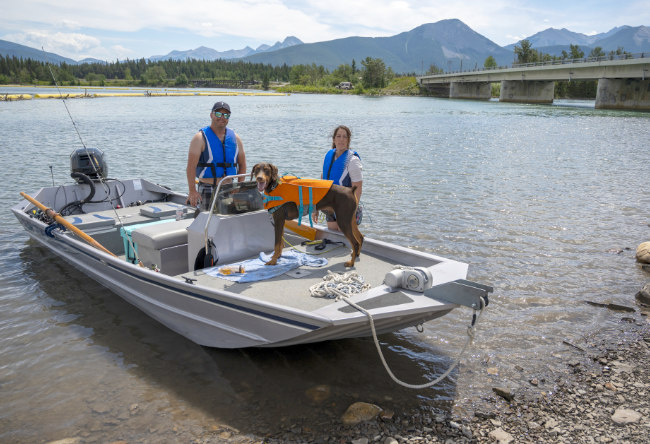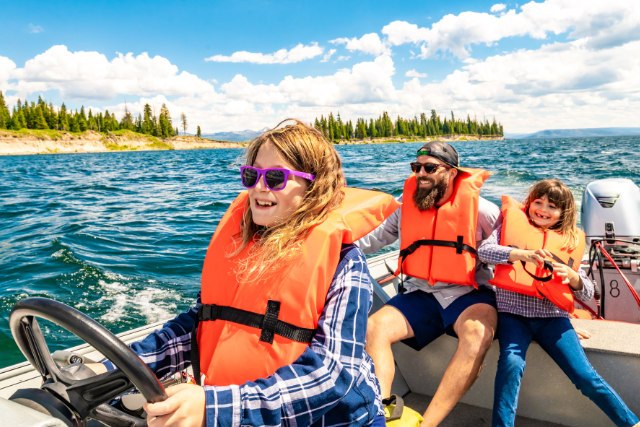12 Essential Boating Safety Tips
Going out on a boat is a favorite pastime for many Canadians. There’s nothing like being on open water, feeling the sunshine and enjoying boat life with a refreshing breeze flowing around. But before you head out on the boat alone or with others, make sure you know how to boat safely to avoid any accidents or troubles while on the water.
1. Learn the ropes of operating a boat
What may seem like the most obvious tip isn’t always one that boat owners do from the beginning – learn the ins and outs of boating and operating a boat. Most provinces require boat operators to pass some form of boating education, which helps new boaters with best practices while boating.
Since boating is more than knowing how to steer, shift gears, slow down or dock the boat, a required boating class offers excellent tips, teaches safety techniques and waterway laws. And of course, before you hit the water, you’ll want to make sure you know how to operate your specific boat model.
2. Check once and then check again
Before starting the boat, make sure that the mechanics of the boat are in working order. If you hear any strange sounds or noises that are louder than normal, find what’s causing it before launching the boat in the water. Double check that all safety measures are on the boat and easily accessible – life jackets, fire extinguishers and emergency supplies.
3. Check the weather to make sure the forecast is clear
Weather can have a significant impact on water conditions – so make sure to check the weather before leaving the dock. If the forecast calls for strong winds, rain or storms, it’s best to stay off the water. All of these factors can make a boating experience dangerous.
4. Bring and wear life jackets
Wearing a life jacket is often the difference between life and death. Some provinces require children under a certain age to wear a life jacket while on any type of boat, so research the life jacket laws in your province.
Activities such as wakeboarding or tubing are also activities where wearing a life jacket is essential. That’s because these activities are done at high speeds and can cause injury. Even if you’re planning a casual, quiet float on the water, make sure you have a life jacket for each person on board. Weather and water conditions can change quickly.

Life jackets can save your life. Wear them, and ensure they’re the right size for everyone on board.
5. Don’t drink and drive a boat
Drinking while driving a boat is not only against the law; it is also extremely dangerous. So dangerous, in fact, that the U.S. has passed a federal law against Boating Under the Influence (BUI).
Drugs and alcohol significantly affect motor skills, judgment and reaction time – none of these should be impaired when operating a boat.
Boating under the influence can lead to deadly accidents, expensive fines, and even jail time. The U.S. Coast Guard states that drinking while driving is even more dangerous on the water than on land.
6. Check your surroundings
Enjoying the view of the beautiful water and surrounding area makes boating a great experience. But, while it’s wonderful to enjoy the view, staying aware of your surroundings and what’s in the water is critical.
You should always keep an eye out for debris in the water, other boats coming too close, people on skies or tubes and other motorized watercraft like jet skis.
7. Don’t leave any passenger behind
Boating can have a lot of distractions – friends and family conversations, music and the noise from other boats. Always be sure to check that your party is all safely aboard before pulling away from the dock. When taking part in water sports like tubing, swimming and wakeboarding, make sure everyone in the water returns to your boat before you leave.
8. Understand the ways of the water
Just like on land, there are rules to maneuvering in the water with other boats. Before pulling away from the dock, make sure you know which direction you are required to leave from the dock. It’s important to know which boat has the right of way, where you can and can’t stop, the speed in the wake zone and more. Understanding the rules of water will keep you and others safe.
9. Put together safety and tool kits
Be prepared for any event before taking off in the boat. There should be a safety kit on board, along with a tool kit. Make sure it includes items like a flashlight, bucket and duct tape. Know who to call in case of an emergency.
10. Know where you are
Make sure you know where you are and how to get back to your original destination at all times. Getting lost is no fun – but even if you do get lost, you need to be able to tell others where to find you.
11. Power off the engine before entering the water
Before entering, exiting or swimming near the boat, the engines should always be off. Once the engines are off, the motor and fast-moving propellers stop working and won’t be able to injure anyone who accidentally gets near these parts.
12. Follow the rules for boating safety tips
The driver or owner of the boat should always set safety rules for their passengers. The rules are meant to be followed – so it’s important to enforce them while out on the water. Any passenger who doesn’t follow the safety rules should be asked to leave the boat to ensure the safety of others.
The memories you make boating with your family and friends can last a lifetime. While you’re working on getting your boat ready for the water, check in with your insurance professional. Finding the right protection for your boat can help bring peace of mind, knowing that your big investment is carefully insured.
